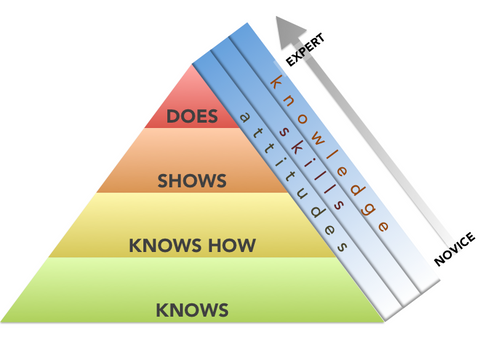Competency-based training is learner‑focused, and lends itself to independent study, allowing learners to study at their own pace, reviewing or practising challenging learning outcomes as they need, and moving quickly through the competencies in which they are more adept. In an earlier post, the four levels of complexity were outlined. These levels measure the student’s depth of knowledge.
Here’s a recap of the four levels:
|
Level 1: Recall/Reproduction |
|
|
Level 2: Skill/Concept |
|
|
Level 3: Strategic Thinking |
|
|
Level 4: Extended Thinking |
|

A Level 1 learner has the basic understanding or knowledge needed to handle routine tasks. A person who has reached Level 1 is familiar enough with the related terminology and concepts to participate in an effective discussion. This learner ‘knows’ the competency area, but they would likely require guidance or supervision to apply their understanding.
A Level 2 learner has a detailed knowledge, understanding and application of the competency. A person who has reached Level 2 has enough understanding to work independently, they can handle non-routine problems and situations, and are capable of assisting others in the application of the competency. This learner ‘knows how’ to apply their knowledge of the competency area.
A Level 3 learner has a highly developed knowledge, understanding and application of the competency. A person who has reached Level 2 can apply their knowledge outside the scope of their position, can help develop materials and resources in the competency and is able to coach or teach others. This learner ‘shows’ their knowledge of the competency area.
A Level 4 learner is a specialist or authority in the competency area. A person who has reached Level 4 is recognized by others as an expert, works across a team, department or even an organization, can apply their skills in the competency area across multiple projects or functions, and is often an innovator, creating new applications and processes. This learner ‘does’ the competency.
Breaking the depth of knowledge into levels helps to identify core competencies that are most important for each position in your organization. Competency levels are often used to describe the requirements needed to successfully perform a specific job or task. They are usually defined by a process called ‘Job/Task Analysis’, shortened in the training world to JTA.
While competency levels describe the depth of knowledge required to carry out a job or task successfully, competency indicators, are used to evaluate performance and to determine whether the job or task was carried out successfully.
Upcoming posts will outline the Job/Task Analysis process and Competency Indicators.



